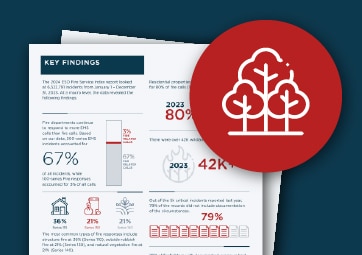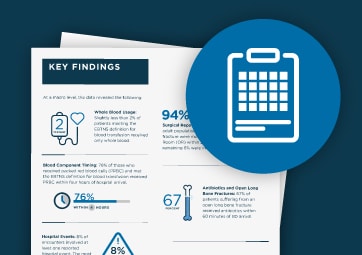Ambulance Patient Offload Time (APOT) is a new metric introduced in the 2024 ESO EMS Index that measures the duration from when an ambulance arrives at the hospital to the transfer of patient care to hospital personnel. Commonly referred to as “wall time”, extended ambulance offload times have raised concerns throughout the healthcare industry. These delays not only add friction to the patient care continuum, but they also strain already limited EMS and hospital resources. To address this challenge, the 2024 ESO EMS Index examines APOT data, shedding light on the frequency of delays and offering actionable insights to help agencies reduce wall times.
Does your department stack up?
The data in the 2024 EMS Index shows that nearly 88% of all patient transfers documented had an offload time of 20 minutes or less, which fell within NFPA guidelines. While most patients experienced a transfer within an acceptable time frame, nearly 10% had to wait up to an hour and 1% even longer. These delays don’t just slow things down; they can affect patient outcomes, satisfaction, and the availability of EMS resources. With potential new CMS policies on the horizon focused on reducing ED wait times, now is the time to understand where your agency stands.
Why APOT is a game changer for EMS
Extended offload times have a ripple effect. Ambulances delayed at hospitals mean fewer resources are available for the next emergency call. Addressing APOT is necessary not only for improving patient outcomes but also for maintaining EMS readiness and response management.
Best practices for improvement
If your agency’s offload times need work, here are a few best practices you can take away to cut down on wall times:
- Collaborate with hospital partners: Work together to create smoother processes for patient handoffs. For example, scanning driver’s licenses can help EMS teams share patient data with hospitals before arrival, speeding up registration and transfer.
- Use Mobile Integrated Healthcare (MIH) programs: These programs provide alternative care options for patients with non-life-threatening cases to avoid unnecessary trips to the ED and keep ambulances available for critical calls.
- Incorporate telemedicine: Allow paramedics and EMTs to consult with physicians or specialists remotely. This can speed up medical decision-making and provide guidance on care during transport.
- Implement nurse triage at dispatch: Direct patients to the right care from the start, reducing unnecessary EMS responses and hospital visits.
See how your agency measures up
Want to see how you stand against other important national benchmarks or learn new approaches to improving your patient care?
Find out where your agency stands and discover new strategies for improvement–download the 2024 EMS Index today.
Your work is demanding enough. Your tools shouldn’t be.
ESO Electronic Health Record (EHR) makes it easier to document and share data, so you can deliver reliable patient records to your hospital partners in real-time.
Discover how ESO EHR can help your team work more closely with your hospital partners by registering for a demo today.


